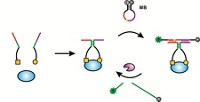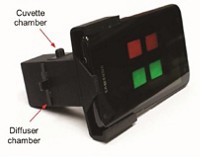Advertisement
Grab your lab coat. Let's get started
Welcome!
Welcome!
Create an account below to get 6 C&EN articles per month, receive newsletters and more - all free.
It seems this is your first time logging in online. Please enter the following information to continue.
As an ACS member you automatically get access to this site. All we need is few more details to create your reading experience.
Not you? Sign in with a different account.
Not you? Sign in with a different account.
ERROR 1
ERROR 1
ERROR 2
ERROR 2
ERROR 2
ERROR 2
ERROR 2
Password and Confirm password must match.
If you have an ACS member number, please enter it here so we can link this account to your membership. (optional)
ERROR 2
ACS values your privacy. By submitting your information, you are gaining access to C&EN and subscribing to our weekly newsletter. We use the information you provide to make your reading experience better, and we will never sell your data to third party members.
Analytical Chemistry
Paper Analytical Device Incorporates Electronic Components To Increase Sensitivity
Medical Diagnostics: A low-cost foldable paper device uses a supercapacitor to help detect picomolar levels of a biomolecule
by Erika Gebel
March 22, 2013

Although paper-based analytical devices are an inexpensive way to detect chemicals, they sometimes aren’t sensitive enough to spot compounds at low concentrations. Researchers have for the first time incorporated a low-cost electronic component into a foldable paper device to increase sensitivity, detecting a biomolecule at picomolar levels (Anal. Chem., DOI: 10.1021/ac4001496).
In resource-limited and remote regions, easy-to-use paper analytical devices could be a boon for health care by allowing doctors to detect rare, disease-related biomolecules in blood samples, says Jinghua Yu of the University of Jinan, in China. Unfortunately, the existing detection methods have limitations, he says: Paper devices that change color in response to certain analytes have low sensitivity. And devices that produce electrical or light signals require expensive external equipment to strengthen the weak signals produced on the paper.
Yu and his colleagues wanted to reduce the costs of a paper device that produces electrical signals by removing its need for external equipment.
In the team’s device, a target molecule triggers a cascade of reactions that generates light. The device converts that light into an electrical current proportional to the concentration of the target molecule. The researchers added an electronic component called a supercapacitor to the device, because it can amplify currents. With the supercapacitor, currents are high enough that the scientists could make measurements using a cheap handheld digital multimeter. They made the supercapacitor by soaking two paper tabs on the device in an electrolyte gel and then folding the tabs on top of each other.
To analyze a sample, the researchers first mix it with gold nanoparticles coated with luminol, a molecule that emits light in the presence of hydrogen peroxide. These particles also contain single-stranded DNA that binds the target molecule. The scientists pipet about 10 µL of this mixture onto a loading zone. They then fold the tab containing the loading zone onto a part of the paper coated with cadmium sulfide nanoparticles. These particles are also decorated with DNA single strands that can bind the target molecule.
After the folding step, the CdS particles can capture the analyte, bringing the two nanoparticle types close to each other. Finally, the researchers add hydrogen peroxide between the fold, which causes the luminol to emit light that then excites the CdS nanoparticles to generate a current. This current travels through the device’s circuitry to the supercapacitor that then amplifies the signal.
Yu’s team tested their device on human serum samples they spiked with varying concentrations of adenosine triphosphate (ATP). They could detect as little as 0.2 pM of ATP. Analyzing one sample takes less than 10 minutes and each device costs about 10 cents, Yu says.
Charles S. Henry of Colorado State University says that the incorporation of a supercapacitor into the device expands the kinds of analyses that are possible on paper. Though this device’s detection strategy is more complicated than that of other paper devices, he says, the procedure a user must follow is still pretty simple: “If you can fold a paper airplane,” you can use this device.





Join the conversation
Contact the reporter
Submit a Letter to the Editor for publication
Engage with us on Twitter